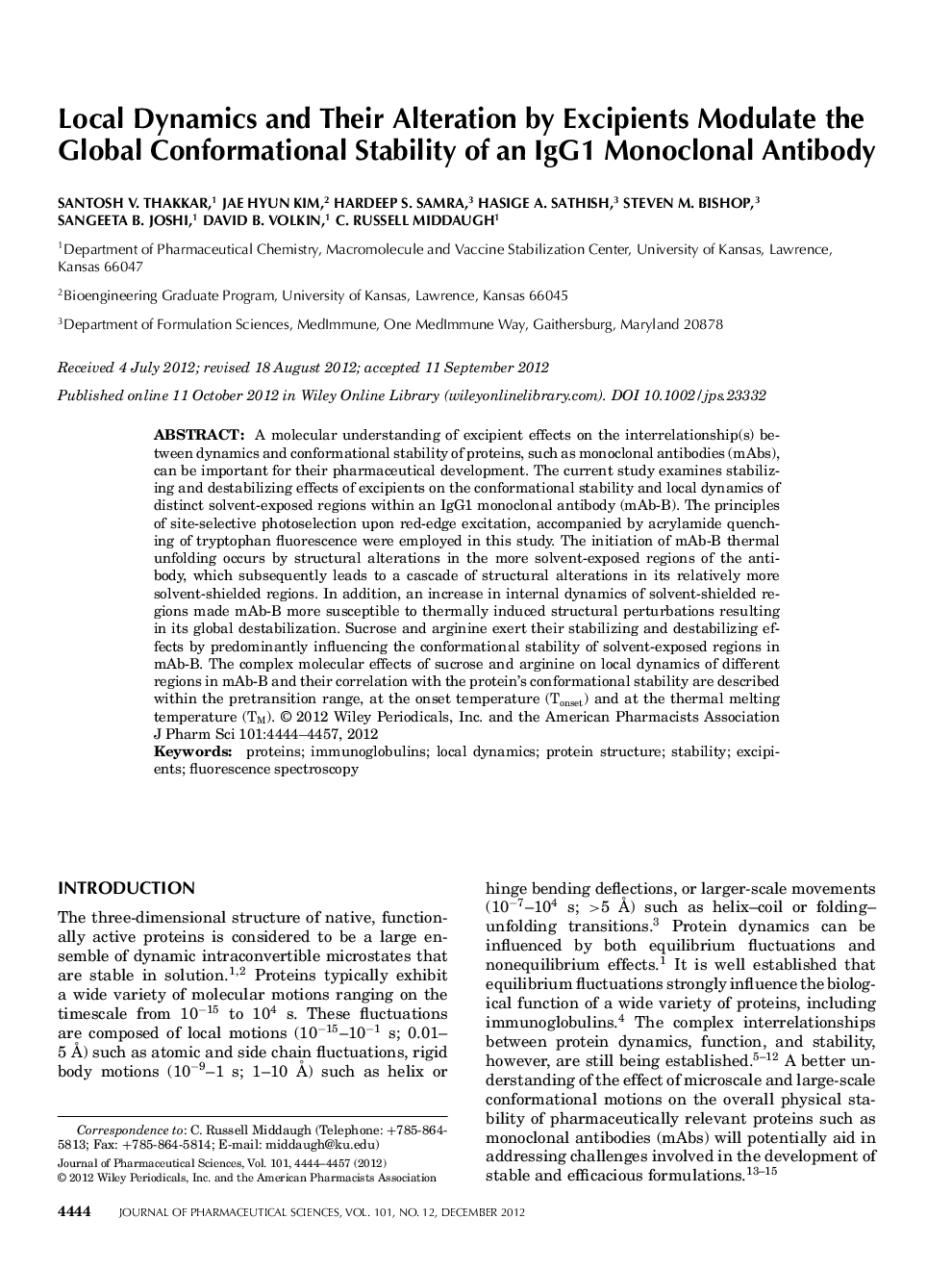| Article ID | Journal | Published Year | Pages | File Type |
|---|---|---|---|---|
| 2485638 | Journal of Pharmaceutical Sciences | 2012 | 14 Pages |
Abstract
A molecular understanding of excipient effects on the interrelationship(s) between dynamics and conformational stability of proteins, such as monoclonal antibodies (mAbs), can be important for their pharmaceutical development. The current study examines stabilizing and destabilizing effects of excipients on the conformational stability and local dynamics of distinct solventâexposed regions within an IgG1 monoclonal antibody (mAbâB). The principles of siteâselective photoselection upon redâedge excitation, accompanied by acrylamide quenching of tryptophan fluorescence were employed in this study. The initiation of mAbâB thermal unfolding occurs by structural alterations in the more solventâexposed regions of the antibody, which subsequently leads to a cascade of structural alterations in its relatively more solventâshielded regions. In addition, an increase in internal dynamics of solventâshielded regions made mAbâB more susceptible to thermally induced structural perturbations resulting in its global destabilization. Sucrose and arginine exert their stabilizing and destabilizing effects by predominantly influencing the conformational stability of solventâexposed regions in mAbâB. The complex molecular effects of sucrose and arginine on local dynamics of different regions in mAbâB and their correlation with the protein's conformational stability are described within the pretransition range, at the onset temperature (Tonset) and at the thermal melting temperature (TM).
Keywords
Related Topics
Health Sciences
Pharmacology, Toxicology and Pharmaceutical Science
Drug Discovery
Authors
Santosh V. Thakkar, Jae Hyun Kim, Hardeep S. Samra, Hasige A. Sathish, Steven M. Bishop, Sangeeta B. Joshi, David B. Volkin, C. Russell Middaugh,
